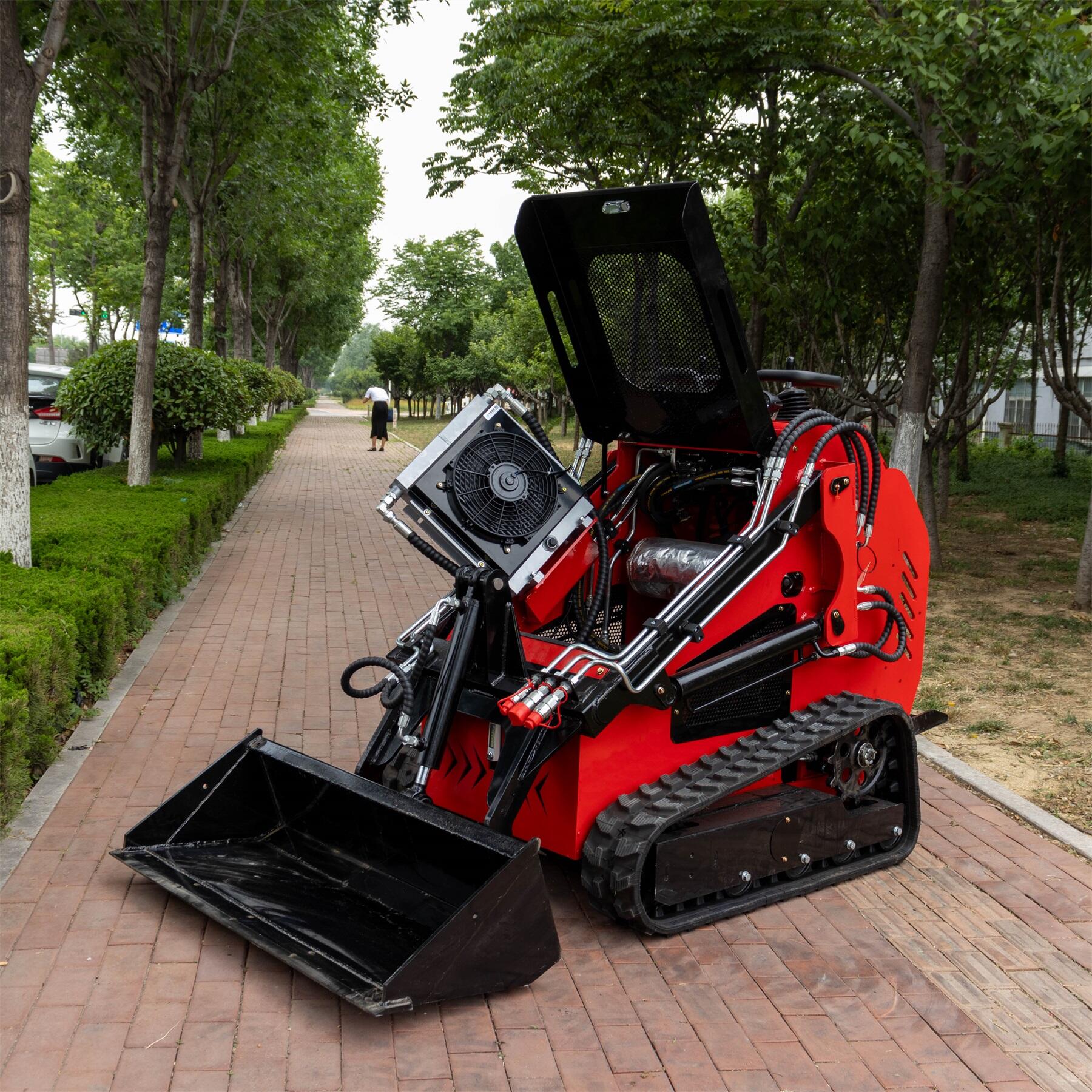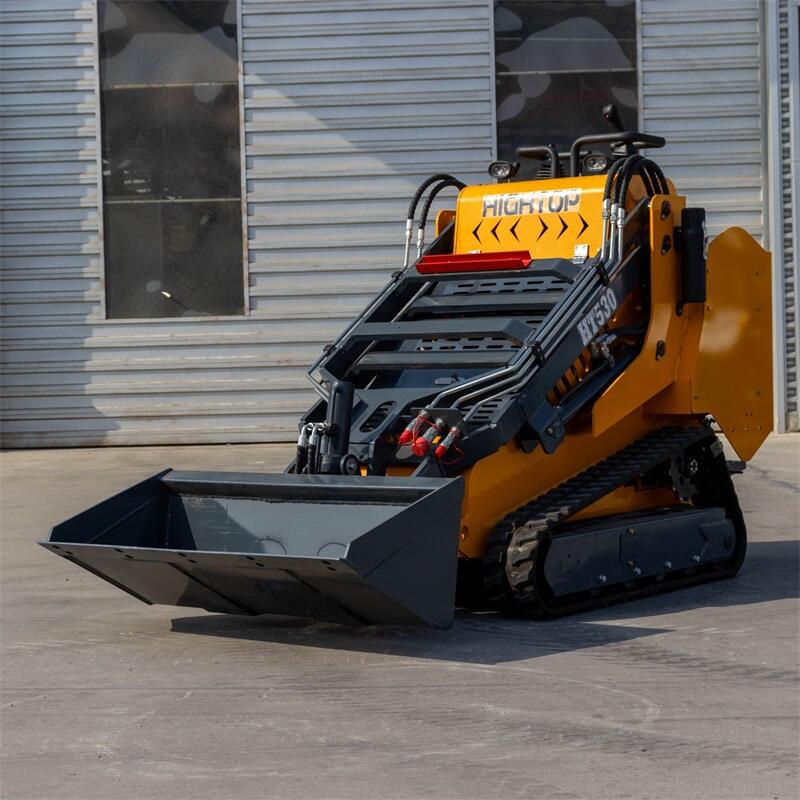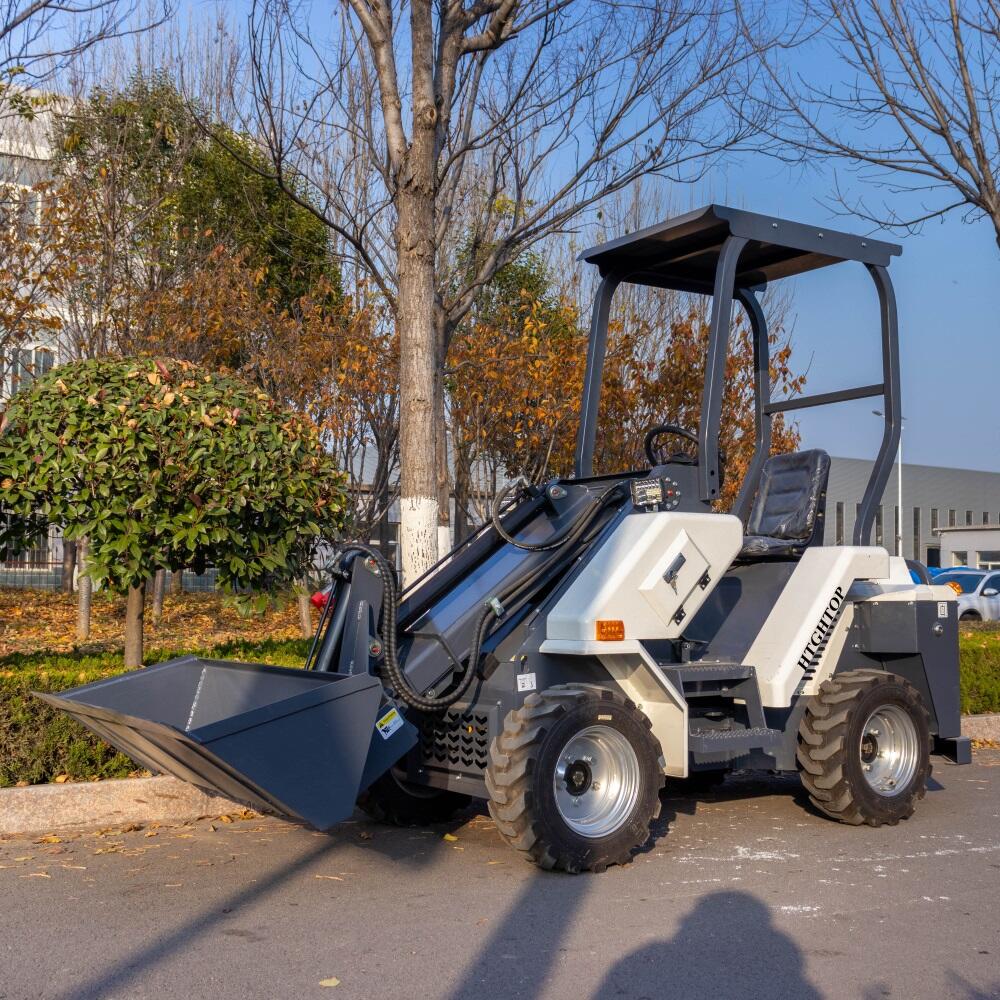Exploring Versatility: Crawler Skid Steer Loaders in Modern Construction
Essential Features of Modern Crawler Skid Steer Loaders
High-Performance Diesel Engines
Today's crawler skid steer loaders come with powerful diesel engines ranging from around 50 HP all the way up to over 100 HP. These robust powerplants give machines the muscle needed for tough jobs like digging through compacted soil or lifting heavy materials on construction sites. How well an engine runs makes a big difference in how much fuel gets burned throughout the day. Operators know that better engine efficiency means less money spent at the fuel pump, which adds up nicely over months and years of regular operation. Meeting emissions requirements like EPA Tier 4 isn't just good for the environment either. Many contractors simply won't buy equipment that doesn't meet these standards because they want to stay ahead of regulations while showing clients their business practices are environmentally responsible.
Rubber Track Systems for Terrain Adaptability
Rubber track systems on crawler skid steer loaders give better grip while keeping the earth underneath safe from harm. These tracks help cut down on how much dirt gets disturbed when working across all sorts of ground types. Track size matters a lot too for both balance and what happens to the soil beneath them. Wider tracks spread out the machine's weight so there's less pressure pushing down into the ground, which stops the soil from getting packed tight. Landscapers love this feature especially when doing garden work near delicate plants. Farmers find value in these machines too because their fields need equipment that can move around without leaving big marks or damaging crops during operations.
Hydraulic Attachment Compatibility
Getting the right hydraulic attachments to work with a crawler skid steer loader makes all the difference when it comes to getting things done efficiently at job sites. Augers, grapples, trenchers – the usual suspects – really boost what these machines can do because they let operators tackle several different jobs without switching vehicles constantly. The key thing here though? Matching those hydraulic flow rates properly to whatever attachment is being used. If this doesn't happen, performance drops off fast. When everything works together as intended, the loader becomes something special for contractors needing to save money while still getting through their daily workload. These machines aren't just versatile paper concepts either; they actually handle dozens of attachments across construction projects, landscaping work, and more. That means fewer trucks on site and less downtime waiting for specialized gear to arrive.
Top Crawler Skid Steer Loaders for Construction Efficiency
HT382T Skid Steer Loader: Rugged Powerhouse
Operators across various industries have come to trust the HT382T Skid Steer Loader when working in really tough conditions. The machine runs on a solid 23 horsepower Kubota diesel engine that just keeps going no matter what kind of dirt or debris gets thrown at it. People who actually use this loader day in and day out talk about how well it handles rough ground thanks to those tough tires or tracks that don't give way easily, plus the hydraulic system that lifts heavy loads without complaint. What makes this machine stand out is not just the engine though. The whole thing has been built small enough to maneuver through tight spaces but still packs enough strength to tackle serious jobs. Farmers, construction crews, and landscaping teams all find themselves relying on this loader because it simply doesn't break down under pressure.
HT530T Skid Steer Loader: Compact Maneuverability
The HT530T Skid Steer Loader is really good at fitting into small spaces thanks to its compact build, which explains why so many contractors love using it on city construction projects where room is limited. It comes with a powerful engine that doesn't guzzle fuel either, saving money over time since operators spend less at the gas station. What sets this machine apart even more is its full 360 degree turning ability. Many people who've worked with it report being able to get into spots other machines just can't reach. This kind of maneuverability proves invaluable when working around obstacles or in confined quarters where traditional equipment would struggle to make those tight turns.
HT-L28 Telescopic Arm: Precision Material Handling
The HT-L28 Skid Steer Loader comes with a telescopic arm that really changes how materials get handled around job sites. With its extra reach and pinpoint accuracy when placing loads, workers can put things exactly where they need to go without wasting time or materials. Construction crews, landscaping teams, and warehouse operations have all seen better results since adopting this equipment. The loader cuts down on mistakes that lead to wasted resources, which saves money in the long run. What sets the HT-L28 apart is how well it handles different tasks day after day. Whether stacking pallets in tight spaces or moving debris from demolition sites, this machine adapts to whatever the job throws at it, making it a must-have for any serious material handling operation.
Key Applications in Construction Projects
Land Clearing and Grading
Crawler skid steer loaders bring real benefits when it comes to clearing land and doing grading work on construction sites. Built tough with strong engines, these machines handle rough terrain without breaking a sweat, which means construction crews spend less time and money getting sites ready for action. When paired with those special grading attachments, operators find they can move around tight spaces much better while still getting the job done right. Industry data shows something interesting too – folks who use skid steers with grading tools often finish land clearing tasks about 30% faster than teams relying solely on manual labor methods. That kind of speed difference adds up over time, making these machines not just effective but also pretty good for saving cash on big projects.
Heavy Material Transport
Crawler skid steer loaders are really good at moving heavy stuff around construction sites, taking on all sorts of materials from loose dirt and gravel to big chunks of debris. These machines can lift quite a bit thanks to their sturdy design, which keeps them stable even when carrying substantial weight across uneven ground. On job sites, this kind of capability makes a world of difference. Contractors know that getting materials moved quickly and safely means projects stay on schedule. Skid steers have become indispensable during those rush jobs where time is money, especially when crews need to clear out debris fast before starting fresh work areas. Their performance in these situations explains why so many construction managers rely on them for day-to-day operations.
Demolition with Specialized Attachments
When it comes to demolition work, skid steer loaders fitted with special tools such as hydraulic breakers and concrete pulverizers make all the difference. These attachments let operators tackle different types of demolition jobs safely thanks to built-in controls that manage weight distribution and keep materials stable during operation. Contractors who rent these machines often find they save money compared to older techniques involving multiple pieces of equipment. The small footprint combined with modern attachments means fewer workers needed on site and faster completion times for projects ranging from old building removals to road repairs. Many construction firms report cutting down their overall costs by at least 30% after switching to skid steer solutions for demolition work.
Selecting the Best Crawler Skid Steer
Matching Capacity to Job Demands
Getting the correct crawler skid steer for the job depends heavily on what kind of weight it needs to carry. Site conditions matter too when picking equipment - think about whether workers need to clear big chunks of debris or move stuff over rough ground. Picking something that can't handle the load often means extra time spent on tasks plus possible harm to machinery down the road. Most manufacturers list their machines' weight limits somewhere obvious so contractors know if they're getting something suitable for the task at hand. Finding that sweet spot where power meets actual capability keeps operations running smoothly without beating up the equipment unnecessarily.
Evaluating Track Durability
When picking out a crawler skid steer, looking at how long the tracks will last matters a lot because this directly impacts how well the machine performs and what kind of money gets spent on repairs later on. The type of ground where the machine operates makes all the difference too. Tracks tend to get worn down much quicker on rough terrain filled with rocks compared to working on smooth dirt or pavement areas. Keeping up with regular maintenance helps somewhat, though replacing worn tracks still costs real money over time. Different brands and models have wildly varying track lifespans in practice. Some premium options simply hold up better under tough conditions, meaning fewer breakdowns and less frequent need to replace expensive parts. For anyone running equipment regularly, factoring in track durability upfront saves headaches and cash in the long run.
Operator Safety and Comfort Features
Putting operator safety and comfort at the forefront when it comes to crawler skid steers really boosts productivity across construction sites. Safety matters a lot here. Think about those ROPS cabs that protect workers if something goes wrong, plus better visibility around the machine so operators can see what's happening all around them. Then there's comfort stuff too important for getting good work done. Seats that adjust properly and air conditioning or heating make a world of difference after spending eight hours inside a machine. When workers aren't fighting discomfort, they stay focused longer without getting tired out so quickly. According to recent field reports from equipment manufacturers, companies that train their staff well while also providing ergonomically designed machinery tend to see fewer accidents on site. This makes sense because nobody wants to deal with downtime caused by injuries. That's why smart contractors keep looking for machines where both safety and comfort have been thoughtfully integrated rather than being an afterthought.




